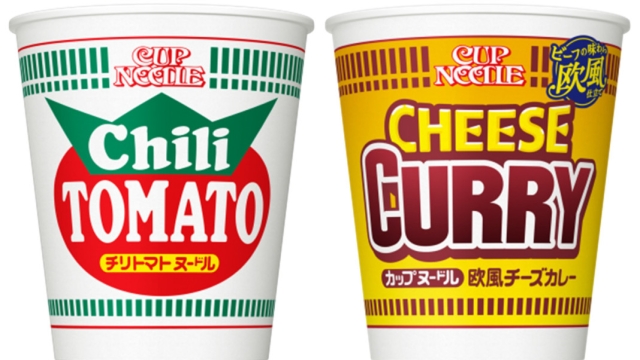
Welcome to the intriguing world of cup noodles, where convenience meets culinary delight. These portable pasta packages have taken the dining world by storm, captivating taste buds and satisfying hunger pangs with their quick and easy preparation. With a variety of flavors and endless possibilities, cup noodles have become a go-to choice for busy individuals, college students, and anyone craving a steaming bowl of noodles in a flash.
Whether you call them cup noodles, instant noodles, or ramen cups, these compact meals have a fascinating history rooted in Japan. Invented by Momofuku Ando in the late 20th century, cup noodles were a revolutionary concept that brought instant gratification to noodle lovers worldwide. The idea of transforming dried noodles into a portable meal that can be prepared with just a cup and hot water has forever changed the way we enjoy this beloved comfort food.
While traditional noodle dishes can require time-consuming preparation, cup noodles offer a time-saving alternative without compromising on taste. This innovative creation has allowed individuals to indulge in the savory goodness of noodles whenever and wherever they please. From the original umami-rich chicken flavor to the more exotic tastes of seafood, beef, or vegetarian options, cup noodles cater to a wide range of palates and dietary preferences.
In our exploration of cup noodles, we will delve into their irresistible flavors, examine the science behind their long shelf life, and uncover the secret techniques used in their manufacturing. Join us on this fascinating journey as we peel back the layers of this portable pasta phenomenon and discover the secrets that make cup noodles a pantry staple around the globe. So, grab your favorite cup noodle, get your taste buds ready, and let’s embark on this culinary adventure together.
A Brief History of Cup Noodles
In the 20th century, a culinary revolution was ignited with the invention of Cup Noodles. This portable and easy-to-make dish has become a staple across the globe, satisfying cravings and providing convenience in a cup. The story of Cup Noodles began in 1958, when Momofuku Ando, a Japanese inventor, discovered a way to create instant noodles.
Ando’s quest to find a solution to food scarcity after World War II led to the birth of the first instant noodle product, known as "Chicken Ramen." However, it was not until 1971 that the concept of Cup Noodles came to life. Ando ingeniously transformed the way people enjoyed noodles by developing a method to package them in a portable cup. The idea was simple yet groundbreaking – all one needed was boiling water and a few minutes to enjoy a delicious meal.
The popularity of Cup Noodles skyrocketed globally due to its convenience and affordability. It quickly became a go-to meal option for busy individuals, students, and even astronauts in space. As more flavors were introduced and variations of the packaging design were created, Cup Noodles solidified its position as an iconic food product, beloved by people of all ages.
Stay tuned for the next section, where we will delve deeper into the irresistible allure of Cup Noodles and explore the flavors that make this portable pasta phenomenon so intriguing.
Cup Noodles
The Science Behind Cup Noodles
Cup noodles have revolutionized the way we enjoy noodles by offering convenience and a quick fix for our cravings. But have you ever wondered about the science behind these portable pasta wonders? Let’s dive deeper into the secrets that make cup noodles so unique.
First and foremost, the key to the success of cup noodles lies in the science of preservation. By dehydrating the noodles, they become lightweight and compact, making them perfect for on-the-go consumption. This is made possible through a process called flash frying, where the noodles are quickly fried and then rapidly dehydrated. The result? Noodles that are not only shelf-stable but also retain their texture and flavor.
But what gives cup noodles their distinct taste? That’s where the magic of flavoring packets comes into play. Each cup noodles package contains a flavoring powder that, when combined with hot water, transforms into a savory broth. This flavoring powder typically consists of a mix of ingredients such as salt, spices, dehydrated vegetables, and sometimes even meat extracts. The combination of these ingredients creates a burst of flavors that tantalize our taste buds and add that extra oomph to our noodle experience.
Moreover, the cup itself plays a crucial role in the science of cup noodles. Made from a special type of food-grade plastic, the cup is designed to withstand high temperatures without warping or leaching any harmful chemicals into the noodles. This ensures that the cup noodles remain safe for consumption even after being exposed to boiling water.
In conclusion, cup noodles are a remarkable marvel of food science. From the preservation of the noodles through flash frying, to the creation of flavorful broths using cleverly designed flavoring packets, and the use of safe and durable cups, the science behind cup noodles is truly fascinating. So, the next time you enjoy a cup of noodles, take a moment to appreciate the intricate science that goes into making this portable pasta phenomenon a reality.
The Popularity and Impact of Cup Noodles
Cup noodles have taken the world by storm, becoming a ubiquitous presence on grocery store shelves and a convenient meal option for people of all ages. The simple concept of combining quick-cooking noodles with a flavoring packet, all enclosed in a handy cup, has revolutionized the way we enjoy instant noodles.
One factor contributing to the immense popularity of cup noodles is their convenience. In today’s fast-paced world, where time is often of the essence, cup noodles offer a speedy and hassle-free solution for hunger pangs. Whether it’s a quick lunch at the office or a late-night snack, cup noodles provide a satisfying and easy-to-prepare meal option.
The impact of cup noodles extends beyond just convenience. These portable pasta creations have also had a significant influence on food culture and culinary traditions. They have transcended borders, introducing people from different backgrounds to the pleasures of noodles in a portable format. Cup noodles have become a symbol of globalization, connecting individuals and fostering a shared love for instant noodle goodness.
In conclusion, cup noodles have skyrocketed in popularity due to their convenience and versatile nature. Their impact on modern food culture cannot be underestimated, as they continue to inspire creativity in the culinary world. Whether it’s a quick fix or a nostalgic comfort food, cup noodles have undoubtedly left an indelible mark on our taste buds and our lives.



